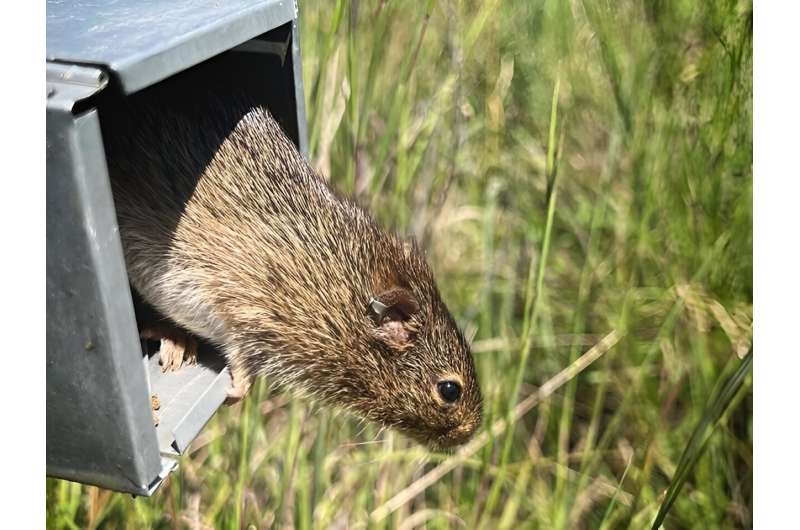This article has been reviewed according to Science X's editorial process and policies. Editors have highlighted the following attributes while ensuring the content's credibility:
fact-checked
peer-reviewed publication
trusted source
proofread
Biologists discover new rodent-based virus

Biologists at the University of Arkansas have discovered a new virus that belongs to a family of viruses that transfers from rodents to humans, some of which cause a fatal cardiopulmonary disease. The study was published in the December issue of Emerging Infectious Diseases journal.
Ozark orthohantavirus, or simply Ozark virus—because it was found in hispid cotton rats captured in grasslands of the Ozark Plateau—is phylogenetically related to other orthohantaviruses that cause severe human disease.
"This is the first orthohantavirus detected in Arkansas and the second definitive orthohantavirus species to be identified in hispid cotton rats from across the U.S.," said Kristian Forbes, associate professor of biological sciences. "Significantly, because Ozark virus is closely related to other viruses that cause severe disease in people, our discovery provides crucial public health information."
Forbes' research focuses on developing strategies to detect and intercept zoonotic diseases, diseases such as COVID-19 and HIV that begin in animals but spill over into humans. His research program focuses on high-risk virus groups in bats and rodents in the United States, Europe and Africa.
The Ozark virus study was conducted primarily by his doctoral student, Nathaniel Mull, who is now an assistant professor at Shawnee State University in Ohio. Mull and Forbes analyzed lung samples from hispid cotton rats that they captured during 2020 and 2021 in the Ozark Plateau region of Arkansas. Of 338 rat samples, 26 tested positive for Ozark virus.
Hispid cotton rats thrive in grassland and agricultural habitats. Despite their wide distribution in North America, previously published surveillance and detection of orthohantaviruses in these rodents had been limited to only Florida and Texas.
Found primarily in rodents, some orthohantaviruses are pathogenic in humans and cause hantavirus cardiopulmonary syndrome (HCPS), a disease with a 30% to 40% fatality rate. At least one HCPS case has been recorded in Arkansas.
"Continued surveillance is needed to address the potential public health threat of Ozark virus throughout Arkansas and the distribution range of the hispid cotton rat host," Forbes said.
More information: Nathaniel Mull et al, Novel Ozark Orthohantavirus in Hispid Cotton Rats (Sigmodon hispidus), Arkansas, USA, Emerging Infectious Diseases (2023). DOI: 10.3201/eid2912.230549



















